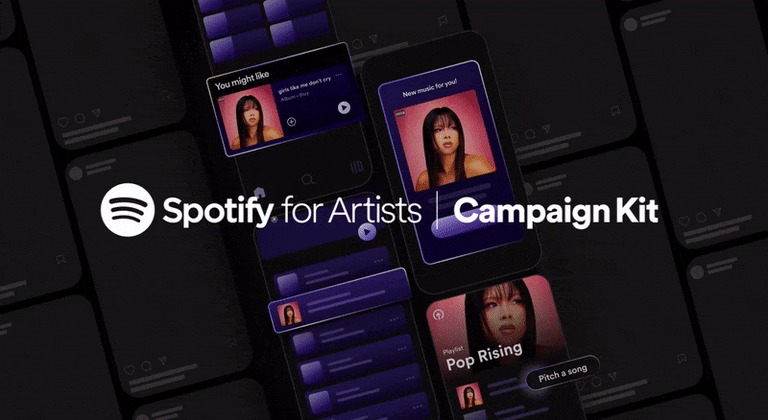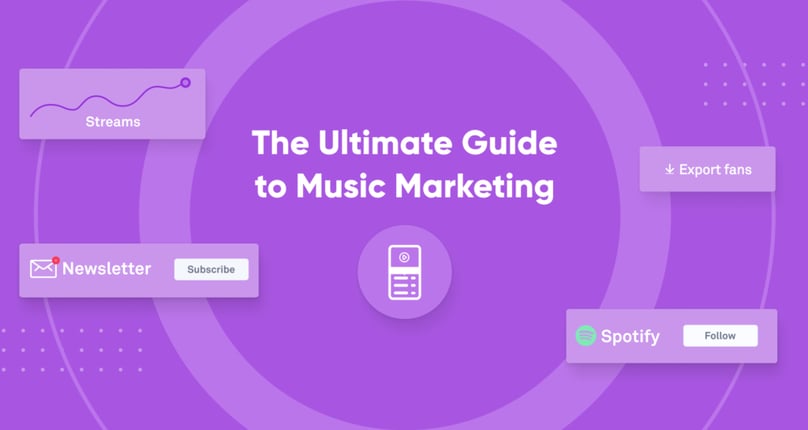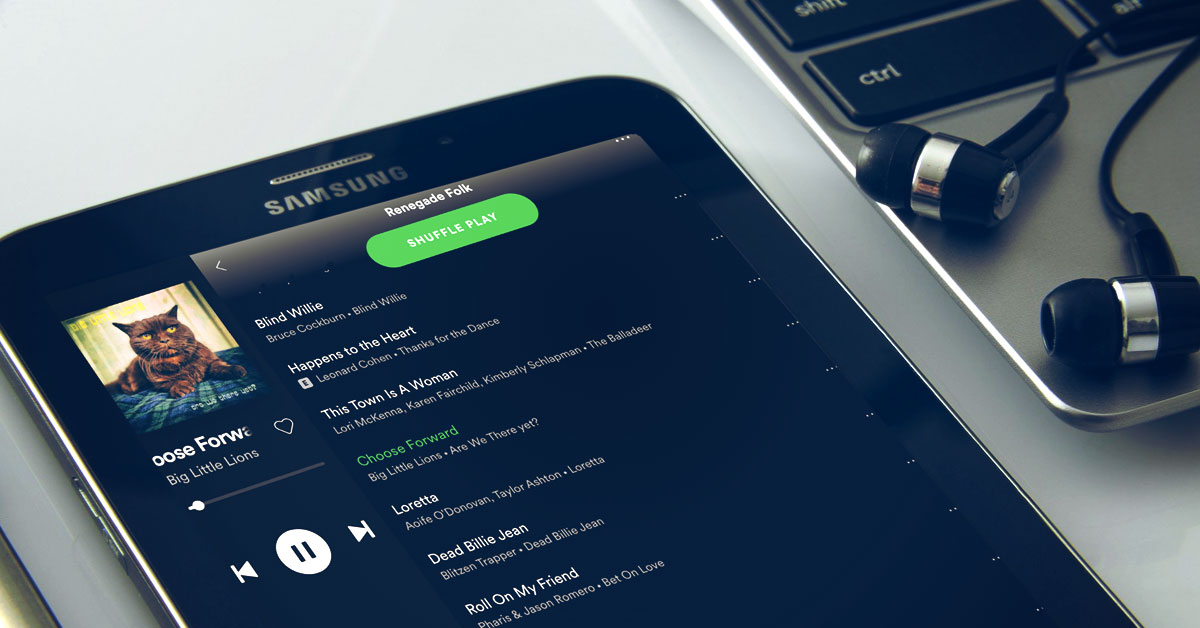To get your music on Spotify, distribute it through an approved aggregator. These digital distribution services partner with Spotify to upload your tracks.
As an artist in the digital age, launching your music on streaming platforms like Spotify is crucial for reaching a broad audience. Spotify dominates the streaming landscape, making it essential for musicians to establish a presence there. Striking a chord with listeners worldwide starts by choosing a reputable aggregator, such as DistroKid, CD Baby, or TuneCore.
These platforms specialize in distributing music to streaming services and often offer additional perks like social media tools and insights into streaming data. Aside from distributing, artists should also focus on crafting engaging artist profiles and marketing their music effectively to maximize visibility. Spotify provides artists the opportunity to connect with over 345 million active users, a figure that underscores the vast potential for exposure and growth through this streaming giant.
Introduction To Music Streaming
Imagine a world where your favorite tunes are just a click away. That’s the magic of music streaming. Groundbreaking platforms like Spotify have transformed the way we enjoy music, making vast music libraries accessible to everyone with an internet connection. Let’s dive into the exciting realm of music streaming and unlock the potential of getting your music heard on Spotify.
The Rise Of Spotify
Spotify broke into the world of digital music and quickly became a giant. Envision millions of songs, playlists, and artists all in your pocket. Spotify’s rise is a tale of innovation, connecting listeners and artists globally. It’s a musical revolution at your fingertips, and here’s a glimpse of its journey:
- Launched in 2008 in Sweden.
- Became a favorite for streaming worldwide.
- Boasts over 380 million active users.
- Offers personalized experiences and endless music discovery.
Benefits Of Being On Spotify
For artists, Spotify is not just a platform; it’s a stage where dreams can soar. Streaming on Spotify means more than just playing your tracks to the world. It shines a spotlight on your work, building your fanbase, and even boosts your income. Let’s uncover the benefits:
| Benefit | Impact |
|---|---|
| Global Reach | Connect with fans across different countries. |
| Analytics | Understand your audience with Spotify’s data. |
| Playlists | Feature in playlists and grow your listeners. |
| Revenue | Earn money for every stream of your music. |
By landing your music on Spotify, you join a family of artists revolutionizing the music scene, one stream at a time.
Creating Your Music
Before dreaming about Spotify streams, focus on making great music. This process begins with perfecting your craft and recording quality tracks. A well-produced song stands out, grabbing listeners’ attention. Let’s jump into how to make your tracks Spotify-ready!
Recording Quality Tracks
To ensure your songs resonate with your audience, start with high-quality recordings. Careful attention to detail can make or break your music’s success on platforms like Spotify. As an aspiring artist, consider these key points:
- Use Professional Equipment: Invest in a good microphone and recording devices.
- Find a Quiet Space: Record in a noise-free environment to avoid unwanted sounds.
- Do Multiple Takes: Record several versions to select the best performance.
- Seek Feedback: Show your recordings to others and consider their constructive criticism.
Mastering And Production Tips
After recording, the next steps are mastering and production. These processes refine your music, giving it that professional sheen. Follow these tips for a polished sound:
- Professional Mastering: Hiring a mastering engineer can elevate the final product.
- Consistent Levels: Ensure all tracks maintain consistent volume and quality.
- Balance Frequencies: Mix tracks so all elements are clear and balanced.
- Quality File Formats: Save your final tracks in high-resolution formats for the best sound.
With these tips in place, your music will be on the right path for Spotify success!
Music Rights And Royalties
Before streaming your tunes on Spotify, grasp the essentials of music rights and royalties. This knowledge ensures your hard-earned music pays off. Let’s dive into copyrights and how artists collect their rightful earnings.
Understanding Copyrights
Copyrights protect your music, making sure only you decide its use. They form when you create original music. This legal concept blocks others from using your music without permission. Know these points:
- Composition Copyright: This protects the melody and lyrics.
- Sound Recording Copyright: This covers the actual recording.
- Both types are essential for streaming on Spotify.
It’s crucial to register these rights. This action starts the journey for earning whenever someone plays your music.
Registering With Performance Rights Organizations
Now, let’s talk about getting those royalties. Start by joining a Performance Rights Organization (PRO). They collect money on your behalf. Here’s a step-by-step guide:
- Choose a PRO available in your country.
- Complete the registration process.
- Submit your songs and recordings details.
PROs track when and where your music plays. They ensure you earn every time it does. Remember to register both your composition and recording. This brings in royalties from both types of copyrights.
Following these steps can maximize your earnings on Spotify. Next, learn about distributing your music to reach listeners worldwide.

Credit: routenote.com
Spotify’s Artist Requirements
Artists eager to share music with the world often aim for Spotify. The platform offers a massive audience and the chance to shine. However, before uploading tunes, it’s crucial to understand Spotify’s artist requirements. These guidelines ensure a smooth process and maintain quality for listeners. This section dives into what Spotify asks of its artists.
Account Verification
Getting verified on Spotify is the first official step. This badge of authenticity tells listeners it’s the real deal. It makes the artist profile look professional and trustworthy. After setting up a Spotify profile, artists must claim it through Spotify for Artists.
Verification unlocks features:
- Profile customisation options
- Access to analytics
- Direct communication with fans
To verify, artists need:
- An active Spotify account
- A unique Spotify artist profile
- At least one released song
Content And Metadata Standards
For songs to go live, Spotify requires compliant content and metadata.
Proper metadata ensures tracks are searchable and attributed correctly. It covers:
- Song titles
- Artist names
- Album information
Music must be original or cleared for use.
Spotify does not allow:
- Hate speech
- Infringing content
- Poor quality recordings
Quality control is strict to maintain platform integrity.
To sum up, understanding and following Spotify’s requirements helps artists thrive.
Distributing Your Music
The journey from creating music to sharing it with the world is thrilling. With Spotify leading the music streaming scene, it’s time to get your tunes on the platform. This means diving into the world of distribution, a crucial step in your music’s journey. Understanding how to navigate this process ensures your songs reach the listener’s ears.
Choosing A Digital Music Distributor
Think of a digital music distributor as your music’s travel agent. Their role is to get your songs onto streaming platforms like Spotify. Look for a distributor that matches your needs:
- Reputation: Pick one with positive feedback from other artists.
- Fees: Some take a cut from sales, others charge upfront. Choose wisely.
- Reach: Ensure they distribute to Spotify and other services you target.
- Extras: Some offer promotional tools or detailed analytics.
Select a distributor that aligns with your goals and budget. Research is crucial—look into companies like CD Baby, TuneCore, and DistroKid.
The Release Process
Once you’ve chosen your distributor, it’s time to release your music. This process involves several steps:
- Prepare Audio Files: They must meet Spotify’s format and quality standards.
- Metadata: This includes song titles, artist name, and other crucial info.
- Artwork: Spotify has specific requirements for cover images.
- Release Date: Decide on a launch date giving you time to promote.
- Submission: Upload your music through the distributor’s platform.
Be thorough with metadata and quality control. Mistakes here can delay your release. Once submitted, your distributor takes over. They send your music to Spotify, usually within a few days to a week.

Credit: www.linkfire.com
Optimizing Your Spotify Presence
Let’s dive into making your Spotify profile shine. Spotify isn’t just about dropping tracks. It’s about creating an experience that listeners can’t resist. You’ll want to be everywhere your fans are looking. So, how do you do that? By optimizing your Spotify presence, you can enhance your visibility and keep fans hooked on your sound.
Creating Engaging Playlists
Entice your audience with playlists that not only include your music but also songs from similar artists. Creating playlists can:
- Show off your musical taste.
- Keep listeners on your profile longer.
- Enhance discovery of your tracks.
Remember to update your playlists regularly to keep content fresh and fans returning for more.
Utilizing Spotify For Artists
Spotify for Artists is a powerhouse tool. It lets you control your profile and provides valuable insights. Use it to:
- Customize your profile with engaging bios, photos, and more.
- Analyze which songs are hitting the mark.
- Understand listener demographics to tailor your marketing.
Make sure every part of your profile represents your brand.
Promotional Strategies
Effective promotion is key. Consider these strategies:
| Strategy | Benefits |
|---|---|
| Share links on social media | Drives your social media followers to Spotify. |
| Collaborate with other artists | Reaches new audiences through cross-promotion. |
| Feature your music on blogs | Creates buzz and backlinks, aiding in discovery. |
Combine these with consistent releases to keep your momentum going.
Monetizing Your Spotify Streams
As an artist on Spotify, making money from your music goes beyond just uploading tracks. It’s about understanding the financial benefits that come with streaming. Let’s explore how you can turn those Spotify streams into a steady revenue source.
Earning Royalties
Earn money every time someone plays your music. The process is straightforward but requires you to know the basics.
- Digital Service Providers (DSPs) pay royalties for streams.
- Collecting societies, like ASCAP or BMI, collect these for you.
- Direct deals with Spotify might offer higher payouts.
Two main types of royalties exist:
- Recording royalties: Paid to record labels or independent artists.
- Publishing royalties: Paid to songwriters and publishers.
Analyzing Listener Data
Spotify provides valuable listener data. Use this information to target your audience more effectively and boost your earnings.
- Access Spotify for Artists to view real-time data.
- Analysis shows who listens, when, and where.
- Data guides touring, promotions, and release strategy.
By harnessing this data, you can tailor your marketing efforts, directly influencing your royalty income.
Life After Spotify Submission
Once your music hits Spotify, a world of opportunities opens up. It’s not just about having your songs available online; it’s about what you do next that truly counts. As an artist, embrace the journey beyond the submission. Engage your fans and spread your music across multiple platforms to establish a strong digital presence. Let’s explore how to thrive in this new chapter of your music career.
Engaging With Your Audience
Interaction with fans is key to maintaining a vibrant Spotify presence. Here’s how to keep audiences listening and talking about your music:
- Update your Spotify profile regularly with fresh content.
- Use Spotify’s built-in tools to share behind-the-scenes glimpses and exclusive updates.
- Respond to messages and comments to create a personal touch.
- Organize playlists to guide your audience through your music journey.
Expanding To Other Platforms
Don’t limit your reach! Expand your presence by distributing your music on other platforms:
| Platform | Action |
|---|---|
| Apple Music | Submit your music for a broader audience. |
| YouTube | Create music videos and lyric visuals. |
| Bandcamp | Sell merchandise and tickets directly to fans. |
| SoundCloud | Engage with the creator community. |
Troubleshooting Common Issues
Encountering issues while trying to get your music on Spotify can be frustrating. But fear not! With the right approach, you can troubleshoot common problems and see your tunes live on one of the world’s leading streaming platforms. Let’s dive into some common obstacles and their solutions.
Dealing With Rejections
Getting a rejection notice from Spotify is disheartening. It’s often due to non-compliance with guidelines.
- Check music quality and metadata accuracy.
- Ensure artwork meets Spotify’s specifications.
- Rectify any copyright issues.
Submit a query through your distributor’s support if confusion persists.
Resolving Technical Difficulties
Technical glitches can prevent music uploads.
- Ensure internet connection is stable.
- Check Spotify’s service status for outages.
- Follow distributor guidelines for file formats and sizes.
Contact distributor support for unresolved issues. They can guide you through technical problems.

Credit: bandzoogle.com
Frequently Asked Questions Of How To Get Your Music On Spotify
Can Anyone Put Music On Spotify?
Yes, independent artists can distribute their music to Spotify. They must use a digital music distribution service such as DistroKid, TuneCore, or CDBaby, which usually involve a sign-up fee or commission, to get their tracks onto the platform.
What’s The Cost To Upload Music To Spotify?
The cost can vary depending on the distribution service you choose. Some services charge an annual fee, such as DistroKid starting at $19. 99 per year, while others may take a commission from your earnings instead. Always compare options to find the best deal for you.
How Long Does Spotify Take To Approve Music?
The approval time for music on Spotify typically ranges from a few days to several weeks. This is dependent on the distribution service used. To ensure a specific release date, it’s recommended to submit your music at least four weeks in advance.
Is It Possible To Track Spotify Streaming Stats?
Yes, once your music is on Spotify, you can track your streaming stats. Spotify for Artists provides in-depth analytics, including listener demographics, locations, and engagement metrics, helping artists understand their audience.
Conclusion
Embarking on the Spotify journey amplifies your musical reach. Every artist can leverage this platform, solidifying their digital presence. Follow the steps outlined; ensure your tracks meet Spotify’s standards. Remember, patience and persistence are key. Start sharing your sounds with the world and watch your fanbase grow.
Ready to make waves? Upload to Spotify now.